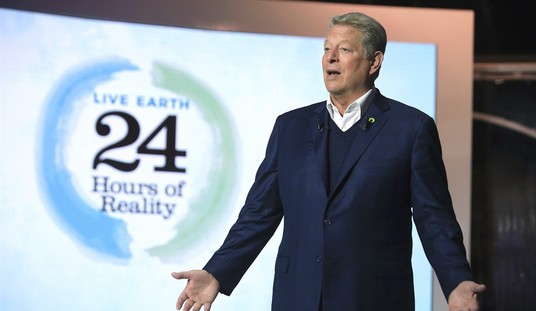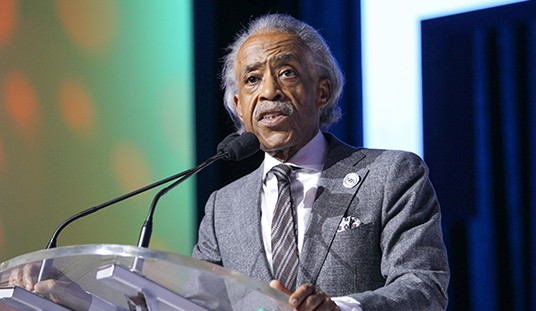With the November elections nearly certain to take place in the shadow of a still-potent coronavirus epidemic, the leadership of the Democratic Party has demanded the increased use of postal voting to avoid exposing voters to the disease. But the U.S. Postal Service (USPS), which holds the legal monopoly for delivering first-class mail, is one of the “sick men” of the federal bureaucracy. According to the GAO:
USPS’s overall financial condition is deteriorating and unsustainable. USPS has lost $69 billion over the past 11 fiscal years—including $3.9 billion in fiscal year 2018. USPS’s total unfunded liabilities and debt ($143 billion at the end of fiscal year 2018) have grown to double its annual revenue.
The savings from USPS cost-reduction efforts have dwindled in recent years. Although USPS has stated that it will aggressively reduce costs within its control, its plans will not achieve the kind of savings necessary to significantly reduce current operating costs.
USPS’s expenses are now growing faster than its revenues—partly due to rising compensation and benefits costs and continuing declines in the volume of First-Class Mail.
Therefore, it will be slow to deliver. The ailing postal service, it is argued, should be taken out of drydock and given stimulus money to enable it to sortie on its historic role.
It’s been undergoing a shakeup under a new postmaster general, Louis DeJoy, a North Carolina businessman and major donor to the Republican Party whom Trump appointed in May. In July, citing a need to cut costs, DeJoy instructed employees to leave mail at distribution centers if the alternative is delaying deliveries on a given day. On Aug. 7, according to the Washington Post, DeJoy introduced a new organization chart that reassigned or displaced 23 postal executives, among them the two top executives overseeing day-to-day operations. Representative Gerald Connolly, a Virginia Democrat who leads the House’s subcommittee on postal oversight, called the reorganization “deliberate sabotage to disrupt mail service on the eve of the election — an election that hinges on mail-in ballots.”
The postal service will probably need more than a short-term slug of money to fix deep-seated problems, but the postmaster general thinks it “is ready today to handle whatever volume of election mail it receives this fall.” After all, even during the initial coronavirus outbreak, the notional extra mail delays amounted to an extra 24-48 hours.
But processing times are really shorthand for bigger worries over the integrity of voting, which in any given situation depends on a host of factors, many of them state and local, rather than on the mere speed of delivery. For example, 1 in 5 ballots was rejected as fraudulent in a recent New Jersey mail-in election. However, speed was not the problem.
In the City Council election, 16,747 vote-by-mail ballots were received, but only 13,557 votes were counted. More than 3,190 votes, 19% of the total ballots cast, were disqualified by the board of elections. Due to the pandemic, Paterson’s election was done through vote-by-mail. Community organizations, such as the city’s NAACP chapter, are calling for the entire election to be invalidated. …
Over 800 ballots in Paterson were invalidated for appearing in mailboxes improperly bundled together – including a one mailbox where hundreds of ballots were in a single packet. The bundles were turned over to law enforcement to investigate potential criminal activity related to the collection of the ballots.
The board of elections disqualified another 2,300 ballots after concluding that the signatures on them did not match the signatures on voter records.
Of particular concern is the extra handling — and risk — in the chain of postal custody compared to voting in person. A disturbing image is conveyed in this article describing a Texas post office. “Carlos Barrios, clerk craft director for the union, said postal workers were directed to give Castro [a visiting congressman] ‘a deceitful perception of how we’re doing things.’ He said workers were told to remove large piles of delayed mail before Castro arrived. He estimated that the pile contained anywhere from 30,000 to 54,000 pieces, some of which were dated as long ago as March.”
If those “large piles” contained votes, what damage would it do to the credibility of an election? As Mike Cernovich memorably put it, “if you wouldn’t send cash in the mail, why would you send your vote?” By contrast, the public actually sends and receives money electronically. Online banking and shopping have never been bigger. This is because many of the equivalents to voter registration and identity verification have been solved through the use of encryption by online players. If you will send ten thousand of dollars through an encrypted system, why wouldn’t you do it with a vote?
When you go to a secure website, the lock icon is displayed in the browser address bar, signifying it has verified an identity message from the site against it’s published public key and concluded: “this message could only have been encoded by the possessor of its secret private key.” This ability to recognize the bona fides (in this case a website) by authenticating it with a public key, a signature that can only have been effected with a corresponding private key of known ownership, is one of the foundational cryptographic innovations of our time.
Crypto techniques underpin schemes like blind-signature voting and homomorphic vote tallying, which anonymize the ballot while preventing it from being altered. In blind signature, the voter retains an unlock key created in the same act that generates the secret ballot. The unidentified secret ballot is marked by the electoral authority as having come from a genuine voter, but that is all. There it lies, valid but unreadable, on the server, not in a sorting room somewhere. On Election Day they send the unlock key anonymously to the electoral authorities and it fits only one secret ballot in their possession, revealing the vote without identifying who it’s from.
An often-used analogy to the cryptographic blind signature is the physical act of a voter enclosing a completed anonymous ballot in a special carbon paper lined envelope that has the voter’s credentials pre-printed on the outside. An official verifies the credentials and signs the envelope, thereby transferring their signature to the ballot inside via the carbon paper. Once signed, the package is given back to the voter, who transfers the now signed ballot to a new unmarked normal envelope. Thus, the signer does not view the message content, but a third party can later verify the signature and know that the signature is valid within the limitations of the underlying signature scheme.
Homomorphic encryption “is a form of encryption allowing one to perform calculations on encrypted data without decrypting it first. The result of the computation is in an encrypted form, when decrypted the output is the same as if the operations had been performed on the unencrypted data.” It skips the ballot decrypting step. One could tally votes involving Trump vs. Biden without knowing the individual votes, knowing the addition will be right. None of this is more magic than systems that enable online banking or shopping. While not foolproof, they are arguably more secure than any other method besides voting in person. There could still be false voter lists. Authorities might try and trace voters by metadata. Implementing it on the fragmented U.S. voting architecture will be difficult.
A voting system has many parts: voter-registration databases, poll books, ballots, optical scanners, voting machines, tabulators, and lots of rules. In a rational system, national elections would be a uniform process overseen by a federal commission. But a quirk of history—a single line in the Constitution that cedes control to the states—has saddled American democracy with an idiosyncratic, fractured way of voting. There are more than nine thousand election jurisdictions in the country, each with its own way of upholding the franchise. Some require ballots to be printed with the candidates’ names in capital letters, and others mandate that the roster of candidates, no matter how long, appears on a single ballot page. There are jurisdictions that encourage same-day registration and allow any voter to obtain an absentee ballot, whereas others impose extreme voter-identification laws and severely limit polling hours and locations. To a large extent, the procedural differences in the way we vote—state to state, municipality to municipality—are functions of both the distinct culture of each locality and the requirements placed on them by
Difficult but not as pointless as giving billions of dollars to the postal service in the hopes it will solve voting integrity problems. Fixing the post office woes may be good in itself, but its impact on electoral reform is limited.
Follow Wretchard on Twitter or visit Wretchard.com
Editor’s Note: Want to support PJ Media so we can keep telling the truth about China and the virus they unleashed on the world? Join PJ Media VIP and use the promo code WUHAN to get 25% off your VIP membership.
‘This Is No House of God!’ Black Lives Matter Activists Yell as They Harass Church in Upstate NY
Did Nancy Pelosi Just Condone Mob Rule?
Support the Belmont Club by purchasing from Amazon through the links below.
Books:
Spillover: Animal Infections and the Next Human Pandemic, by David Quammen. This prescient book, that reads like a thriller, predicted the Covid-19 coronavirus pandemic. Science writing at its best.
The Impeachers: The Trial of Andrew Johnson and the Dream of a Just Nation, by Brenda Wineapple. When President Abraham Lincoln was assassinated and Vice-President Andrew Johnson became “the Accidental President,” it was a dangerous time in America. Congress was divided over how the Union should be reunited after the Civil War and Johnson ignored Congress and acted like a king. The book dramatically evokes this pivotal period in American history, when the country was rocked by the first-ever impeachment of a sitting American president, and brings to vivid life the extraordinary characters who brought that impeachment forward.
What Jesus Meant, by Garry Wills. People on both sides of the political spectrum often cite Jesus as endorsing their views. But in this New York Times bestseller, Wills argues that Jesus subscribed to no political program. He was far more radical than that. This book is an illuminating analysis for believers and non-believers alike and is a brilliant addition to the conversation on religion.
For a list of books most frequently purchased by readers, visit my homepage.
Did you know that you can purchase some of these books and pamphlets by Richard Fernandez and share them with your friends? They will receive a link in their email and it will automatically give them access to a Kindle reader on their smartphone, computer or even as a web-readable document.
Open Curtains by George Spix and Richard Fernandez. Technology represents both unlimited promise and menace. Which transpires depends on whether people can claim ownership over their knowledge or whether human informational capital continues to suffer the Tragedy of the Commons.
The War of the Words, Understanding the crisis of the early 21st century in terms of information corruption in the financial, security and political spheres
Rebranding Christianity, or why the truth shall make you free
The Three Conjectures, reflections on terrorism and the nuclear age
Storming the Castle, why government should get small
No Way In at Amazon Kindle. Fiction. A flight into peril, flashbacks to underground action.
Storm Over the South China Sea, how China is restarting history in the Pacific.










Join the conversation as a VIP Member